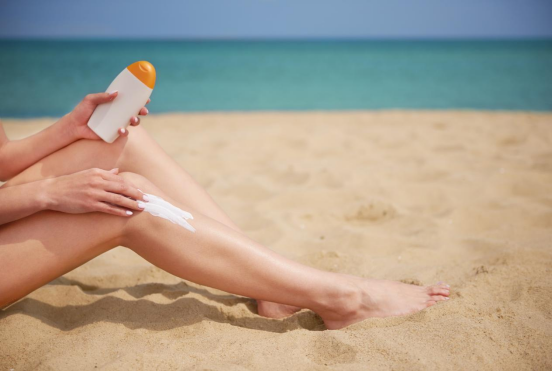
As customers end up being progressively wise about skin care, the debate between chemical and physical sun blocks remains to be a hot topic. While both offer crucial defense against the sun's dangerous ultraviolet (UV) rays, physical sunscreens are frequently admired for their mild yet reliable formulation, making them a favored option for those with delicate or responsive skin. The key to their success lies in their active ingredients, which produce a physical barrier on the skin to block out UV radiation. This post will look into the world of physical sunscreens, focusing on their essential components: zinc oxide and titanium dioxide.
Unlike their chemical counterparts, which take in UV radiation and transform it into warm, physical sun blocks function by sitting on top of the skin to develop a shield that deflects and scatters both UVA and UVB rays. This system is why they are commonly described as "sunscreens." The main benefit of this technique is its instant efficiency upon application and the lower possibility of triggering skin inflammation, as the components are not taken in into the skin.
The most celebrated ingredient in the physical sun block family members is Zinc Oxide. This giant mineral is special in its capability to supply broad-spectrum security, implying it efficiently guards the skin against the complete range of UVA and UVB rays. UVA rays are in charge of premature aging, including wrinkles and fine lines, while UVB rays are the key source of sunburn. By using detailed security against both, zinc oxide plays a crucial duty in protecting against sunlight damage and lowering the danger of skin cancer.
In addition, zinc oxide is renowned for its relaxing buildings. It has actually been used for centuries to deal with minor skin irritations, breakouts, and burns, a testament to its mild nature. This makes sunscreens created with zinc oxide a suitable choice for people with sensitive skin, acne-prone skin, or problems like rosacea and eczema. Its non-comedogenic residential or commercial properties additionally imply it is much less likely to obstruct pores, a typical problem for those with oily or combination skin.
The various other key player in the physical sun block category is Titanium Dioxide. This normally occurring mineral is an additional outstanding ingredient for creating a physical obstacle against UV rays. It is very effective at showing and spreading UVB radiation, supplying durable security versus sunburn. While it offers great defense across the UVB spectrum, it is usually considered less reliable against long-wave UVA rays contrasted to zinc oxide.
For this reason, titanium dioxide is usually utilized along with zinc oxide in sun block solutions. This combination produces a collaborating result, enhancing the general broad-spectrum security of the item. By leveraging the toughness of both ingredients, formulators can produce a sun block that uses thorough and dependable protection versus the sun's harmful rays. Like zinc oxide, titanium dioxide is also gentle on the skin and is a suitable choice for those with sensitive or conveniently aggravated skin.
In the last few years, innovations in solution technology have resolved among the first drawbacks of physical sunscreens: the thick, white cast they would typically leave on the skin. Modern formulas currently utilize micronized or nano-sized bits of zinc oxide and titanium dioxide, which enables a much more cosmetically stylish application without jeopardizing their protective capabilities. This means you can physical sunscreen ingredients enjoy the gentle, reliable defense of a physical sun block without the telltale white residue.
In conclusion, physical sunscreens supply a reliable and mild means to secure your skin from the sun. Their star ingredients, zinc oxide and titanium dioxide, operate in consistency to produce a physical shield that disperses unsafe UVA and UVB rays. With their superb safety and security profile and suitability for all skin kinds, specifically sensitive skin, physical sunscreens are an awesome force in the battle against sunlight damage. The next time you are Surf the sunscreen aisle, consider the effective, protective, and skin-loving benefits of a physical formulation.